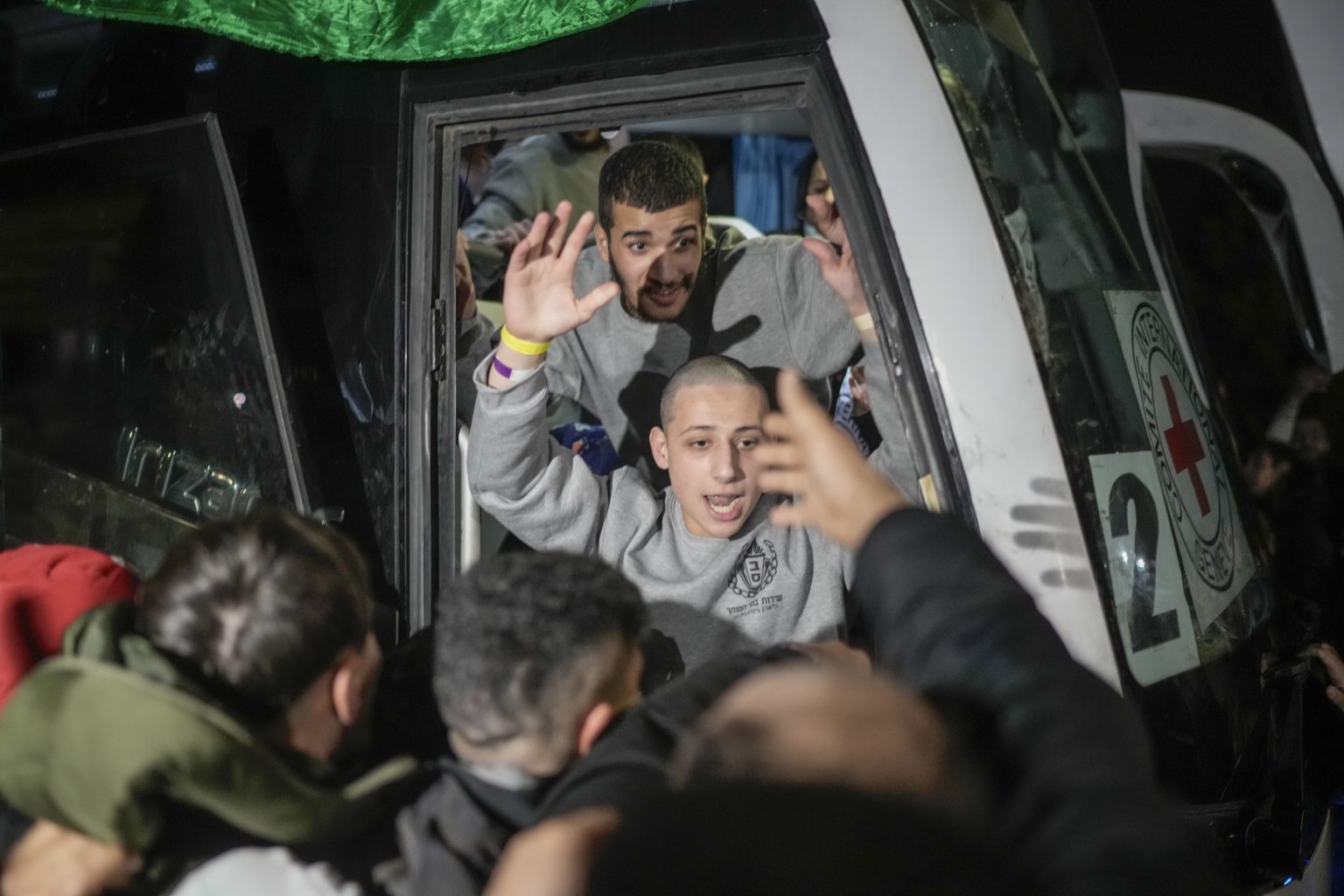The nascent ceasefire between Israel and Hamas witnessed its first tangible outcome just after 1 a.m. on Monday, as 90 Palestinian detainees, all women and teenagers, were released from Ofer Prison near Ramallah. This release, part of a broader exchange that also saw three Israeli hostages freed on Sunday, marks a critical initial step in implementing the fragile agreement aimed at quelling 15 months of intense conflict and pervasive uncertainty. The freed detainees had been held on a range of security-related charges, from relatively minor offenses like stone-throwing and online incitement to more serious allegations, including attempted murder. This initial exchange represents a cautious first step toward de-escalation and, potentially, a more enduring peace.
The release of Emily Damari, Romi Gonen, and Doron Steinbrecher back to their families in Israel was met with a complex wave of emotions. While relief washed over the nation upon their return, the joy was tempered by a profound anxiety for the nearly 100 other Israelis still held captive in Gaza following Hamas’s October 7, 2023 attack. The stark contrast between the celebratory reunions and the ongoing captivity of others underscored the precarious nature of the ceasefire and the immense challenges that lie ahead in resolving the deeply rooted conflict. The limited scope of the initial release serves as a painful reminder of the numerous unresolved issues fueling the ongoing tension and the daunting task of achieving a lasting peace.
The ceasefire agreement, brokered under significant international pressure, stipulates the phased release of 33 Israeli hostages over six weeks. In return, Israel has committed to releasing nearly 2,000 Palestinian prisoners. Beyond the prisoner exchange, the agreement includes a temporary cessation of hostilities and provisions for increased humanitarian aid and fuel deliveries to Gaza. The deal comes amidst a transition of power in the United States, with outgoing President Biden and incoming President Trump both pushing for a resolution. Israeli Prime Minister Benjamin Netanyahu, facing pressure from both administrations, has publicly stated that he received assurances from Trump that Israel retains the right to resume military operations against Hamas if the situation warrants it. This complex political backdrop adds another layer of intricacy to the already fragile agreement, highlighting the delicate balance of internal and external pressures influencing the decision-making processes.
The current conflict, ignited by Hamas’s cross-border assault on October 7, 2023, has exacted a devastating toll on both sides. Hamas’s attack resulted in the deaths of approximately 1,200 people, predominantly civilians, and the abduction of 250 individuals, with around 100 still unaccounted for and feared dead. Israel’s retaliatory military offensive has inflicted even greater casualties, with Gaza’s Health Ministry reporting over 46,000 Palestinian deaths, more than half of whom are women and children. The ministry’s figures do not differentiate between combatants and civilians, further blurring the lines amidst the chaos and escalating the humanitarian crisis. Israel claims to have eliminated over 17,000 Hamas militants, a figure yet to be substantiated with concrete evidence. The Israeli military has released footage purporting to show Hamas embedding military infrastructure within civilian areas, including homes, schools, and mosques, a practice that, if true, drastically complicates the conflict and exacerbates the humanitarian crisis.
The narratives emerging from both sides reveal the profound human cost of the conflict and the deep-seated mistrust that continues to fuel it. Rami Nofal, a displaced resident of Gaza City who lost his son in an Israeli airstrike, poignantly described the ceasefire as “a joy mixed with pain.” His words encapsulate the bittersweet reality for many Palestinians, who welcome the respite from violence while still grappling with immense personal loss. On the Israeli side, Asher Pizem, a resident of Sderot, a city frequently targeted by Hamas rockets, expressed skepticism about the deal’s longevity. He views the ceasefire as a mere postponement of the inevitable next confrontation and criticizes the provision of aid to Gaza, fearing it will only empower Hamas to regroup and launch future attacks. These divergent perspectives underscore the deep chasm that separates the two sides and the significant challenges in building trust and fostering a sustainable peace.
The initial 42-day phase of the ceasefire agreement offers a temporary reprieve from the relentless violence, but the long-term prospects remain uncertain. Subsequent phases of the agreement outline further prisoner and hostage exchanges and aim to establish a framework for a permanent end to the conflict. However, the durability of the ceasefire hinges on the continued commitment of both sides to adhere to its terms. The deeply entrenched animosity, coupled with the complex political and security considerations at play, casts a long shadow over the prospects for a lasting peace. The coming weeks and months will be crucial in determining whether this fragile ceasefire can evolve into a genuine pathway towards reconciliation or merely serve as a temporary lull in a protracted and devastating conflict.

